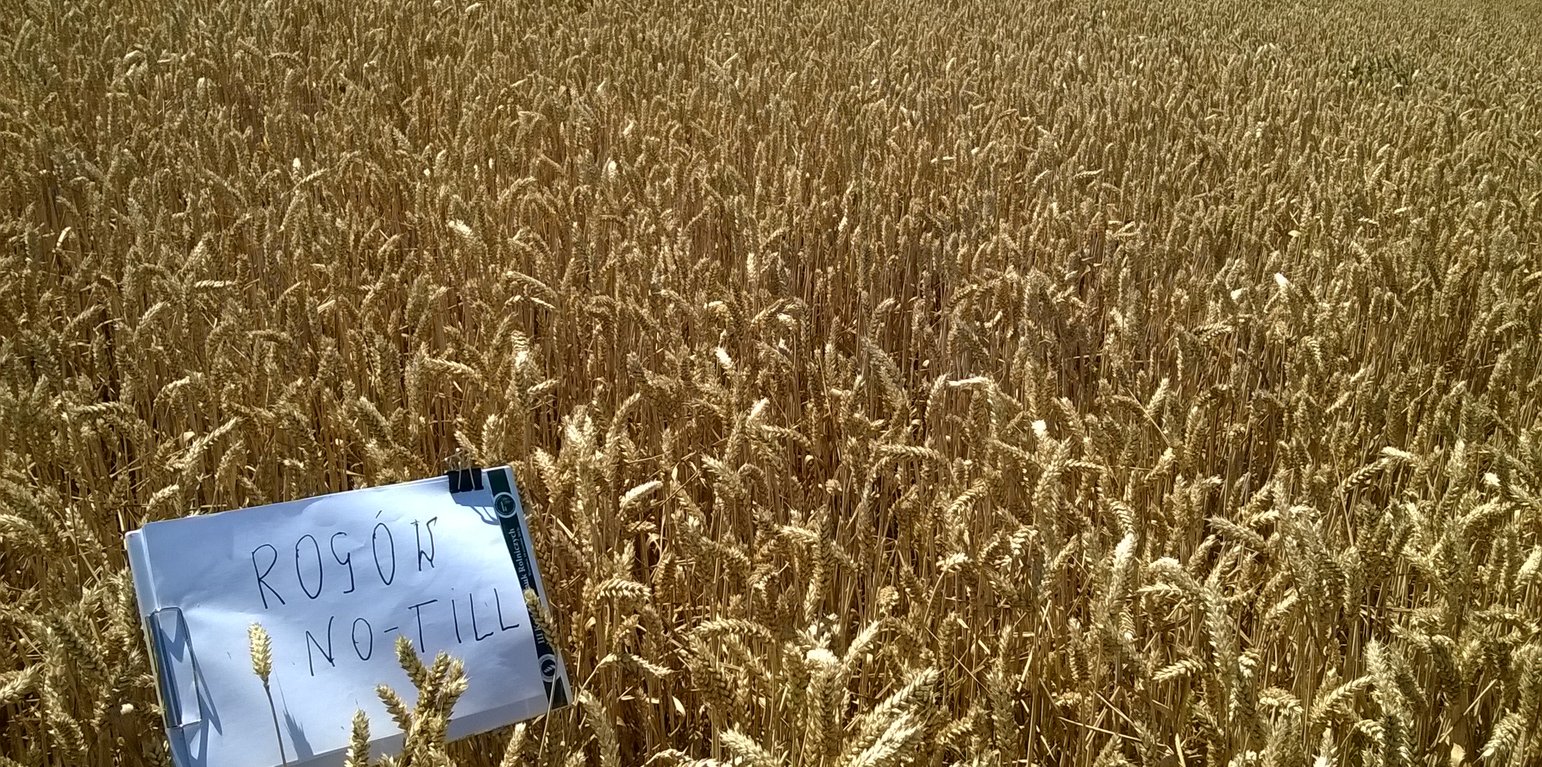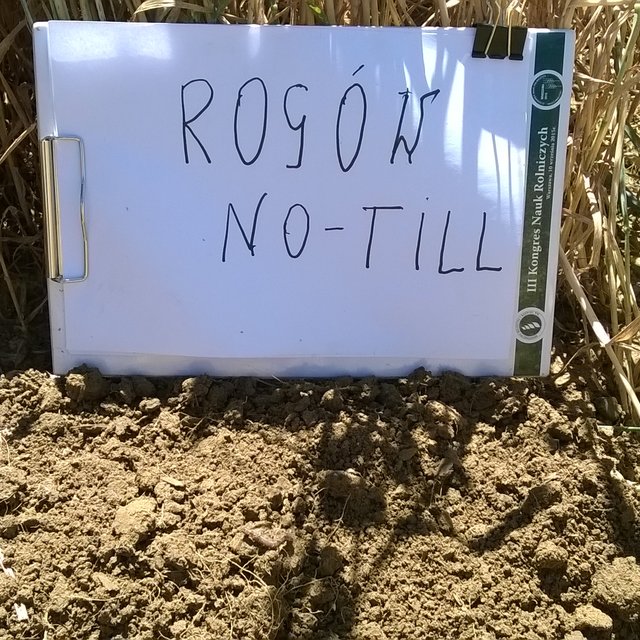



The technology is used in Rogów (N 50.80018 E 23.44883), in Zamosc Region in Poland under cereals or oil crops. The technology is used on about 700 ha area. The case study is embedded in a typical agricultural region on rather fertile soils formed from loess. The altitude at the study site is 238 m.a.s.l., average temperature 17.6°C and precipitation 563 mm. The farmer uses direct sowing technique and the following machines: stubble cultivator, seed drill with disc coulters and combine harvesters. The crop rotation includes the following crops: wheat/maize/wheat/rape. No-till, as well as minimum and reduced tillage, provides the opportunity to reduce energy requirements, increase soil organic matter content and protects the soil against erosion, runoff and compaction. No-till may often increase crop yields. The costs reduction for fuel making this technology more attractive commercially. No-till reduces CO2 emission from fuel during machinery usage. The presence of crop residues on the surface of soil layer can cause plant diseases. It is necessary to use some low amount of herbicides and fungicides in no-till.

Location: Rogów, Poland
No. of Technology sites analysed: single site
Spread of the Technology: evenly spread over an area (approx. 0.1-1 km2)
In a permanently protected area?:
Date of implementation: 10-50 years ago
Type of introduction




The farmer observed increase of crop productivity in Mg per ha for the following plants: wheat, rape and maize. Grain yield of wheat under no-till vary from 8.8 to 11 t/ha. The yields are greater than those from average yield under conventional plough system.
The no-till technology increases crop quality by improving soil water retention.
The no-till technology decreases the risk of production failure due to greater yield stability.
The no-till technology simplified land management by less intense machinery traffic on the field.
The expenses on agricultural inputs in no-till technology are reduced due to lower fuel costs.
The workload in no-till technology decreases by lower number of agricultural practices.
The no-till technology improves the food security by increased yield stability.
Land degradation knowledge is improved by the promotion of the no-till technology.
The water quantity increases in no-till technology due to less evaporation caused by crop residues on the surface of the soil.
The water quality increases in no-till technology due to protection of soil against erosion and runoff.
The water collection in no-till technology is improved due to better infiltration of rainfall water through earthworms macropores open at the soil surface.
The surface runoff in no-till technology decreased due to presence of crop residues on the field surface and open earthworms macropores increasing infiltration of rainfall water.
The no-till technology decreases evaporation due to crop residues on the soil surface.
The no-till technology increases soil moisture by reduced evaporation due to crop residues on the soil surface and increasing soil organic matter content.
The no-till technology increases soil cover due to crop residues on the soil surface.
The no-till technology decreases soil loss due to reduced soil erosion and runoff.
The no-till technology increases soil accumulation due to increase of soil organic matter content.
The no-till technology reduces soil crusting and sealing by the presence of crop residuses and greater soil aggregates stability.
The no-till technology reduces soil compaction due to greater bearing capacity of soil and due to less traffic on the soil.
The no-till technology increases nutrient cycling / recharge due to reduced surface runoff and associated nutrient losses and greated biodiversity.
The no-till technology increases soil soil organic matter content due to crop residues on the soil and less mineralization of organic matter.
Quantity before SLM: 5.8
Quantity after SLM: 6.9
We observed increase of pH value (6.9) in no-till coil compared to conventionally tilled soil (5.8) that can be related with greater soil organic matter content in no-till soil.
The farmer observed increase of crop productivity.
We observed greater quantity of earthworms under no-till compared to the conventional tilled soil.
Pest/disease control increased in no-till technology due to proper application of pesticides.
The no-till technology decreases landslides/ debris flows by protection of soil against erosion and greater water storage. However, no landslides were not observed in the area.
The no-till technology desreases emission of carbon and greenhouse gases due to reduction of CO2 and other greenhouse gases realising by mechanical soil loosening.